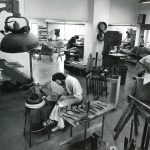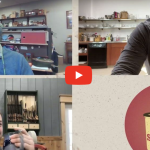We may receive a commission when you use our affiliate links. However, this does not impact our recommendations.
Now that we’ve uncovered the reasons behind plain-sawn boards’ tendency to cup and explored methods to rectify their misalignment, let’s delve into addressing cupping in furniture pieces that have developed over time and strategies for preemptively mitigating this issue in newly constructed items.
Consider a split-top table that has succumbed to cupping or a wide solid wood shelf that you anticipate may cup in the future. In such cases, you might seek concealed methods to reform their geometry or embed elegant battens to counteract cupping discreetly.
Here are some refined ideas that surpass the simplicity of last week’s button solution:
- Batten with Recessed Oblong Holes: These oblong holes, designed for the screw’s shanks and heads, ensure the batten remains securely in place over time, preventing shifting angles that a simple batten might experience.

- Grooved Batten with Metal Clips: A fast and straightforward solution, this involves using a tall batten grooved on both sides and affixed onto the cupped or potential cupped board with metal clips and screws.

- Concealed Trapezoid Batten: This trapezoid or dovetail-shaped strip of wood is inserted into a matching dado across the board. After clamping the board flat (if it’s cupped), route the dado using a dovetail bit. Then, craft the batten on the table saw and insert it into the dado. Remember to apply glue only to the last few inches of the batten to allow for the board’s natural expansion and contraction.
- Crowned Trapezoid Batten: Stronger than the simple trapezoid batten, this variant protrudes above the board’s surface, resembling a mushroom. Follow the same process as above for routing the dado. Then, form the batten on the table saw, followed by the router table to match the dovetail dado.

- Metal Bar: Concealed within the board, a metal bar made of steel and drilled at intervals is embedded in a router recess. Drive screws through oversized holes to allow for wood movement, similar to the simple batten solution from last week. Ensure the board is flat before routing the recess and embedding the metal bar.

By implementing these techniques, you can address cupping issues in furniture parts with finesse, ensuring longevity and stability in your woodworking projects.
Here are some supplies and tools we find essential in our everyday work around the shop. We may receive a commission from sales referred by our links; however, we have carefully selected these products for their usefulness and quality.












